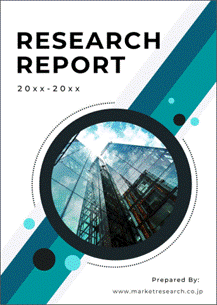 | • レポートコード:D0-MOR-AP1384 • 出版社/出版日:Mordor Intelligence / 2020年4月 • レポート形態:英文、PDF、79ページ • 納品方法:Eメール(受注後2-3営業日) • 産業分類:食品&飲料 |
| Single User | ¥555,000 (USD3,750) | ▷ お問い合わせ |
| Team User | ¥629,000 (USD4,250) | ▷ お問い合わせ |
| Corporate License | ¥1,036,000 (USD7,000) | ▷ お問い合わせ |
• お支払方法:銀行振込(納品後、ご請求書送付)
レポート概要
| 本調査レポートは、乳タンパク質のヨーロッパ市場について調査・分析した資料で、乳タンパク質の市場概要、動向、セグメント別市場規模、競争状況、企業情報、市場機会分析などで構成されています。 |
The Europe Dairy Protein Market is projected to register a CAGR of 5.2% % over the forecast period.
– The rising health and wellness concerns among the consumers facilitated by the growing participation in sports have led to the enhanced usage of dairy protein in the European market. In addition, the rising middle-class population and the economic growth have led to an increase in the consumption rate of health drinks and a protein-based diet. The awareness among the mass for a healthy lifestyle, as well as the awareness of enhancing immunity, have led to a significant rise in the demand for different dairy proteins such as whey and casein proteins in this region.
– Furthermore, the European dairy industry can help formulators meet consumer demand for clean labels and day-to-day convenience at the production scale. In addition, increasing consumer awareness, especially for functional foods and dietary supplements, has been a major factor for market development in recent times.
– However, the presence of alternatives, such as plant proteins, as well as the increasing instances of lactose intolerance and milk allergies are some of the barriers to the growth of the market.
Key Market Trends
Increased Production Of Dairy Products Filling The Consumption Gap In Major Countries
European Union has one of the largest dairy markets in terms of volume consumption, where the region is the number one producer of cheese and therefore, the largest producer of whey according to the European Whey Processor association. As of 2016, the EU dairy sector, the dairy farmers and their private or cooperative milk processors, account for about 160 million tones of milk and hence for about 22% of the global milk production. With more than 12,000 milk processing and production sites across Europe, the dairy sector contributes heavily to the food and beverage sector. Germany and Poland are the largest consumers of whey protein in the European Union, and an increasing number of consumers are now including high protein powders, amino acid products, high protein ready-to-drink beverages, and high protein bars into their meals thus pushing the market revenue generation in the dairy ingredients market. Furthermore, the region is also one of the prominent exporters of a large number of dairy products globally. In 2018, the European Union exported about 600,000 tones of whey going to many different countries around the world. Also, in 2016 the EU exported more than 557,000 tones of whey globally. China is the highest importer of EU Whey with 187,306 tonnes imported in 2018.
Rising Demand For “Sportification” From Non-Athletes
The sports nutrition industry is rapidly becoming mainstream which is pushing the market for the dairy protein market. Dairy protein renders the desired nutrition value, especially protein amount to the sports food products thus, contributing towards their increasing usage in various supplication. Dairy protein, especially whey, is well known for its high quality, high absorption, and superior content of amino acids, essential for muscle growth. This factor makes it a popular sports-nutrition ingredient. The use of whey and lactose ingredients, both, in the processed food and nutritional sectors has helped the market to grow. Researches suggest that dairy proteins such as whey protein and milk proteins can also as an anti-aging agent. Moreover, these proteins might also help to decrease stress and reduce cortisol concentration levels. Awareness among the mass to be fit and remain in shape, along with enhancing the body immunity, has lead to significant growth in demand for dairy proteins in urban areas. Furthermore, the consumers, especially millennial consumers, and gym enthusiasts in the region are focusing on increasing strength and enhancing recovery. This factor is providing the ingredient manufacturers the opportunity to introduce high-protein products with multiple benefits, which appeal to the athletes and gym enthusiasts.
Competitive Landscape
The European Dairy Protein Market is fragmented, owing to the presence of large regional and domestic players in different countries. Emphasis is given on the merger, expansion, acquisition, and partnership of the companies along with new product development as strategic approaches adopted by the leading companies to boost their brand presence among consumers. Key players dominating the European dairy protein market include Saputo Dairy, Erie Foods International, Inc., Glanbia plc, Idaho Milk Products, and LAITA Group among others.
Reasons to Purchase this report:
– The market estimate (ME) sheet in Excel format
– Report customization as per the client’s requirements
– 3 months of analyst support
1 INTRODUCTION
1.1 Study Assumptions & Market Definition
1.2 Scope of the Study
2 RESEARCH METHODOLOGY
3 EXECUTIVE SUMMARY
4 MARKET DYNAMICS
4.1 Market Drivers
4.2 Market Restraints
4.3 Porter’s Five Forces Analysis
4.3.1 Bargaining Power of Suppliers
4.3.2 Bargaining Power of Buyers/Consumers
4.3.3 Threat of New Entrants
4.3.4 Threat of Substitute Products
4.3.5 Intensity of Competitive Rivalry
5 MARKET SEGMENTATION
5.1 Ingredient
5.1.1 Milk Protein Concentrates (MPCs)
5.1.2 Whey Protein Concentrates (WPCs)
5.1.3 Whey Protein Isolates (WPIs)
5.1.4 Milk Protein Isolates (MPIs)
5.1.5 Casein and Caseinates
5.1.6 Other Ingredients
5.2 Application
5.2.1 Food & Beverage
5.2.2 Sports & Performance Nutrition
5.2.3 Infant Formulations
5.2.4 Other Applications
5.3 Geography
5.3.1 Germany
5.3.2 United Kingdom
5.3.3 France
5.3.4 Spain
5.3.5 Italy
5.3.6 Russia
5.3.7 Rest of Europe
6 COMPETITIVE LANDSCAPE
6.1 Most Adopted Strategies
6.2 Market Share Analysis
6.3 Company Profiles
6.3.1 Saputo Dairy
6.3.2 Erie Foods International, Inc.
6.3.3 Glanbia plc
6.3.4 Idaho Milk Products
6.3.5 LAITA Group
6.3.6 Milk Specialties
6.3.7 Tatura Milk Industries Pty. Ltd.
7 MARKET OPPORTUNITIES AND FUTURE TRENDS